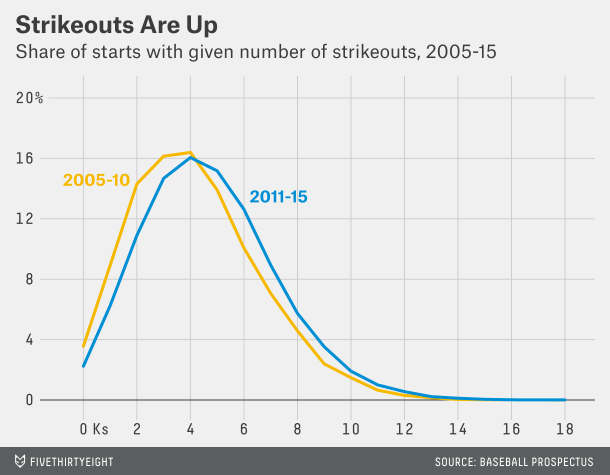Baseball has changed in the last twenty years or so. (And I’m old enough to recognise it.) Gone are the days of the high strikeout/high pitch count starts from the likes of Roger Clemens, Pedro Martinez, Randy Johnson, and Kerry Wood. In are high strikeout/low pitch count games…
What does that mean? You can read this article from FiveThirtyEight to make the most sense of it. But this chart explains part of it:

Basically, baseball is played with a lot more data than it used to be. We now know empirically that pitchers are most effective the first time through the lineup. Less so the second time. Even less so the third. The great pitchers, obviously, lose less effectiveness, but everybody does. So, if you can maximise your strikeouts (which come at a great cost of pitches thrown per arm—separate story that) by limiting a start to, say, twice through a lineup, you do so. Because then you can plug in hard-throwing relievers who, in their first and often only time through the lineup, can rack up a few strikeouts. So the result from that is higher strikeouts, lower pitch counts.
And that means that it is highly unlikely you will see games where a starting pitcher throws 120, 130, 140 pitches in a start and strikes out 16+ batters. Which is a shame, because I’m clearly old as those were my favourite ball games to watch.
Credit for the piece goes to the FiveThirtyEight graphics department.
